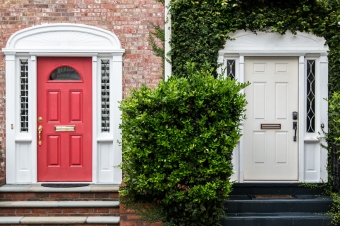In all parts of life, we cannot focus on only one element of a problem, or else the solution we devise will lack weight, substance, and impact. This statement applies very well to the heating and cooling systems in your home. Your home’s building envelope has many interconnected parts which must operate together to maintain your home comfort and perform efficiently.
As Canadians, we all know that space heating accounts for over half (approximately 60%) of residential energy use. Houses built before 2010 require 25 per cent more space heating energy because they have less insulation and are draftier. Over the past eight years or so, building codes have changed to require increased insulation and airtightness levels.
There are a few primary areas of the home where we tend to lose the most heat, energy, and money:
- Poor sealing around walls, ceilings, and foundations. Allowing air leakage to go unresolved in your home can reduce the effectiveness of some types of insulation, imbalance your heating or cooling efforts, and can cause moisture and indoor air quality problems.
- Insulation with a low R-value. Different insulating materials, such as fibreglass, cellulose, and spray foams, provide different thermal barriers in the building envelope. Higher R-values for the insulation indicates that it is more resistant to heat flow. It is important to also note that the insulation will perform differently when installed on the interior or exterior of the home. Thermal bridging can occur when parts of the house structure are exposed to both the interior and exterior, providing a direct path for heat to flow around any insulation.
- Lack of insulation in the home’s roof and attic. Insulating with a material of R-40 on top of your roof and with a material of R-60 in your attic can result in heating energy savings of over 75 per cent.
- Low-efficiency windows and doors. This can be an expensive upgrade but replacing older windows with double- or triple-glazed, argon-filled windows will greatly assist in your energy saving efforts.
Many homeowners will notice when their building envelope has gaps or inefficiencies. They will feel discomfort in the space or calculate out a higher-than-expected energy bill.
If you are uncertain about your home’s efficiency levels, however, you can request an EnerGuide home evaluation. Completing this energy assessment before your energy efficiency renovations could, depending on your energy provider, also allow you to access rebates (e.g. Union Gas offers customers a Home Reno Rebate program).
During an EnerGuide home evaluation, an energy advisor will assess your home from basement to attic. They will measure the existing airtightness of your home, recommend any door and window improvements, and suggest upgrades to your space heating system. You will receive an energy efficiency report to help you make decisions about doing retrofits and upgrades.
Don’t ignore your building envelope and all that it means for your complete home comfort and energy bills! We can direct you to the resources you need to better understand your building system. Give us a call today to get started!






